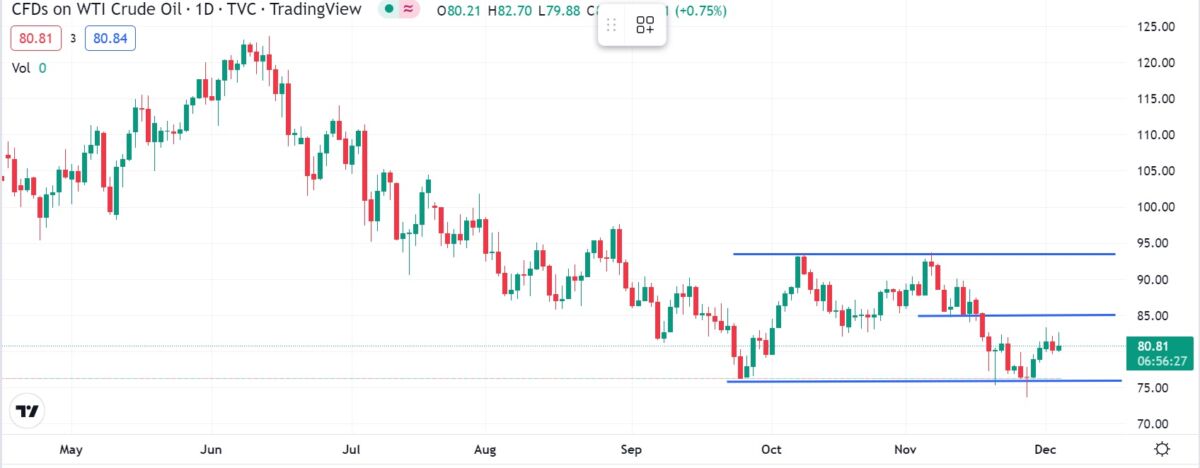Output stays the same
The oil market has been recently roiled by many critical factors, however, the bull market has stayed intact. OPEC+ decided to agree to commit to its oil-output goals on Sunday, just two days after G-7 countries settled to a $60 price cap on Russian oil.
This happened despite growing fears over oil demand as the world is engulfed in a worldwide recession and as new Covid-related lockdowns in China and persisting confusion over Russia’s ability to export crude have sent the price of oil tumbling.
The delegates stated that during a virtual conference, OPEC+ decided to extend the production cutbacks of 2 million barrels per day, first agreed upon in October. This would give the group time to examine the market impact of the price cap on Russian oil.
Also, an interesting topic: Tesla tries to start uptrend despite worsening fundamentals
Meanwhile, prices are responding as anticipated to the OPEC+ decision, aided by China’s further easing of Covid restrictions. At the time of writing, both Brent crude and West Texas Intermediate were up by more than 2% from Friday’s closing, jumping above the important $80 level.
Price cap on Russian oil is in effect
Oil prices dipped on Friday following the EU’s approval of the Russian price limit. Traders disregarded concerns that the mechanism will push a significant amount of Russian oil off the market and pose a supply problem. Russia will continue to export oil to its regular consumers, China and India, who will subsequently resale a portion of this commodity to Europe and other countries.
You may also like: Weekly macro report: Are we in a recession?
Uncertain is the extent to which these regulations will restrict Russian exports. According to Argus Media statistics, the price limit is considerably above the $50 level at which the country’s flagship Urals oil presently trades. However, Moscow has stated that it would prefer to reduce output rather than sell oil to anybody who implements the price restriction.
Alexander Novak, Deputy Prime Minister of Russia, stated on Russian television that the nation would fully adhere to market conditions. Novak said:
“We will sell oil and oil products to the countries that will work with us based on market conditions, even if that means we’ll have to somewhat reduce output.”
OPEC observers stated that the group’s decision was comprehensible in light of the massive forces set to drive oil prices in unforeseen ways. Amrita Sen, a chief oil analyst in Bloomberg and co-founder at consultant Energy Aspects Ltd said:
“OPEC+ rolled over the existing quotas as expected amid uncertainty around Russian flows following the price cap and a weaker China.”
The OPEC+ decision should remain in effect for at least a few months. Saudi Arabia and Russia will lead the group’s Joint Ministerial Monitoring Committee when it meets again in June.
WTI brief technical analysis
It looks like the key support of September lows near $75 has been successfully defended, prompting the recent rally in oil prices. The next target for bulls could be at $85, followed by the double top formation at around $93.50.

WTI crude oil chart, Source: Author’s analysis, Tradingview.com










Comments
Post has no comment yet.